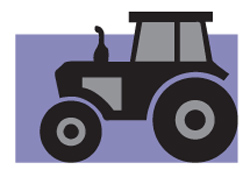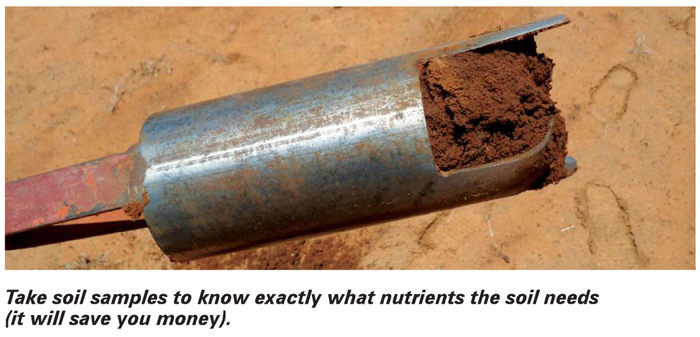March 2019
| Written by a retired farmer |  |
The preparations required for planting wheat or barley on a farm or centre pivot area might in general be the same for each farmer but may differ according to prior production experience for the soil climate and irrigation systems found in specific areas.
The management to attain the goal of profitability of either wheat or barley production will be determined by some well-considered and implemented factors.
These would include:

Management considerations before planting
All the factors mentioned above should be carefully considered before deciding on your own production plan and the actions to be taken. These actions must be done timeously to ensure optimum planting conditions and planting in the correct window for the cultivars chosen.
A thorough knowledge of the detailed growth cycles of either wheat or barley must be acquired by studying the comprehensive description available. The differences to the general descriptions of the growth phases of the cultivars to be used should be noted and management practices adapted accordingly.
For instance, in wheat production, there are three main systems which describe the growth characteristics of wheat namely the Feekes, Zadoks, and Joubert systems. Whatever system you decide to use it is critical to know at which growth stage your crop is so that the correct amount of irrigation water and quantity of nitrogen can be applied at the right time.
Using all the above information and experience it is important to establish a target yield for your circumstances to ensure a profitable crop. This yield target will in turn determine the exact practices to be used to achieve the goal.
Irrigation
The water use of your crop will be determined by the plant available moisture from rainfall received or pre-planting irrigation to bring the soil up to field capacity, the rainfall received during the growth of the crop and the irrigation water applied.
It is critical in both wheat and barley production to have a very well maintained centre pivot with pumps in good order and fully functioning fertiliser mixing tanks in place before planting commences. The growth cycles are so fast that any breakdown of equipment can be very costly indeed. Attention to detail to ensure that every mechanical component is in 100% working order cannot be over emphasised.
Tillage methods for seed bed preparation
One of the most critical considerations is the different operations required to create the optimum seedbed. Conventional tillage is recommended for a wheat on wheat cropping cycle to reduce the chance of root diseases in the crop but leaves the soil vulnerable to wind and water erosion. In some scheme areas continuous cycles of wheat after maize in one and successive seasons are practiced. This can have dire consequences for a decline in soil fertility leading to reduced yields in both crops.
Conservation tillage can reduce the probability of wind and water erosion but can lead to excessive plant residues on the surface that really make planting even with best ‘no-till planters’ very difficult. A large build up of mulch is good but can promote root born diseases. It is suited to a rotation that includes legumes, summer crops such as maize and fallow periods if many pivots have been established as can be found in the larger farming operations.
Optimal planting windows and seed densities
The seeding rate in kilograms per hectare to establish the optimum planting and emerged population per square metre is of the most important for high crop yields. The farmer must carefully measure and count the number of seeds per kilogram of the seed to be planted. Alternatively, the 1 000-seed mass can be weighed and used so that the optimum kg/ha can be applied through the planter used. This can vary from 25 grams to 52 grams per 100 kernels, so it must be carefully worked out.
In general, the recommended planting dates and planting densities for wheat can range from the 1st of June to the 31st of July with seed densities of 80 kg to 140 kg and even 160 kg to 200 kg, for specific cultivars. The farmer must know exactly which cultivar requires which planting rate. Barley is generally planted at 80 kg to 110 kg per hectare. It is important to know what is recommended for your pivot and farm.
Conclusion
It is critical to know in detail the many aspects of irrigated wheat and barley production required to produce a successful crop. Farming successfully is both an art and a science.
Publication: March 2019
Section: Pula/Imvula